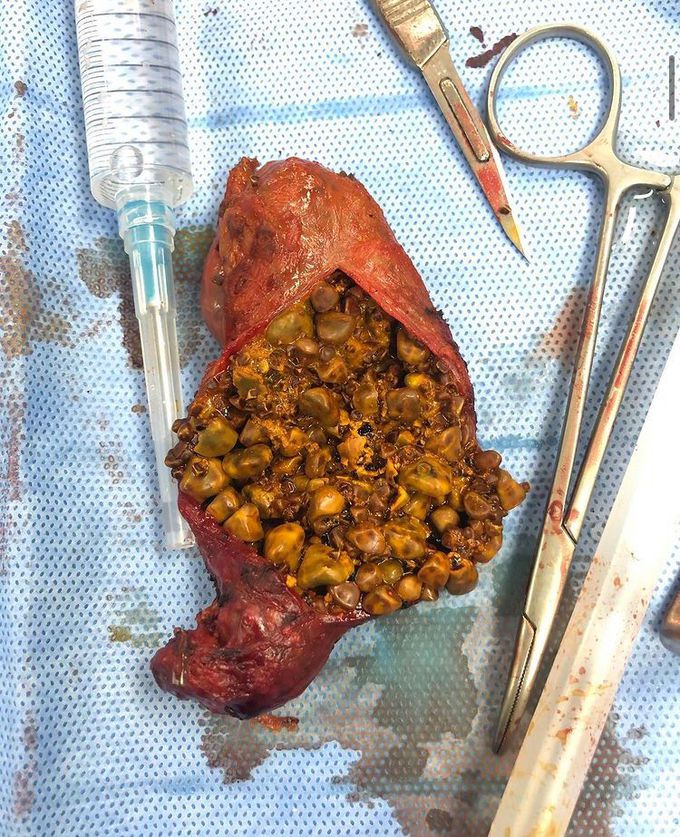


Gallbladder cholecystectomy
A whooping 200 stones were extracted from this gallbladder following a cholecystectomy!! Gallstones, or cholelithiasis, refers to the presence of stones in the gallbladder, usually multiple small gallstones measuring about 0.5 cm. However occasionally there can be either one very large gallstone present measuring up to 5 cm diameter or hundreds of smaller stones the size of a grain of sand. The presence of stones is not considered to be a disease unless they cause symptoms, most common being right upper quadrant (biliary colic) or epigastric abdominal pain or discomfort, especially after a fat-rich meal. Other symptoms include belching, bloating, flatulence, heartburn, and nausea. Migration of a gallstone into the opening of the cystic duct may block the outflow of bile during gallbladder contraction. The resulting increase in gallbladder wall tension produces the characteristic type of pain we know as biliary colic. Cystic duct obstruction, if it persists for more than a few hours, may lead to acute gallbladder inflammation (acute cholecystitis). Normally, water-insoluble cholesterol is made water soluble by combining with bile salts and lecithin to form mixed micelles. Supersaturation of bile with cholesterol most commonly results from excessive cholesterol secretion but may result from a decrease in bile salt secretion or in lecithin secretion. Thus, the excess cholesterol must precipitate from solution as solid microcrystals, which aggregates and grows, eventually forming solid concentrates or stones. Either open or laparoscopic cholecystectomy for symptomatic stones is the treatment of choice


